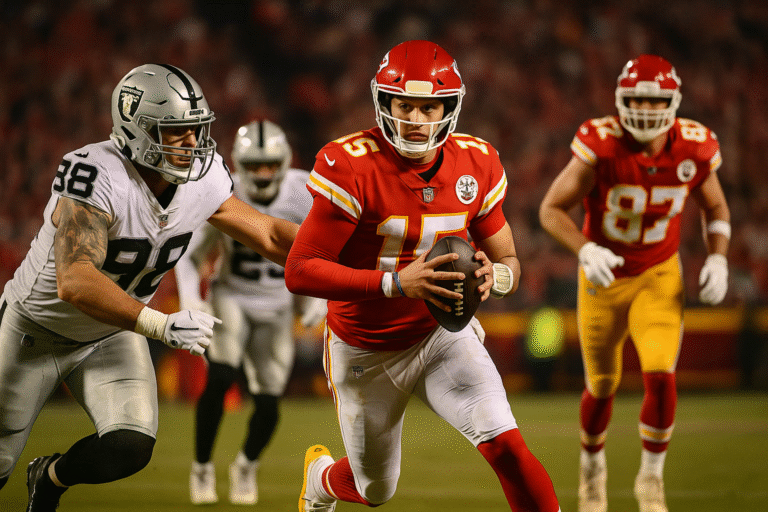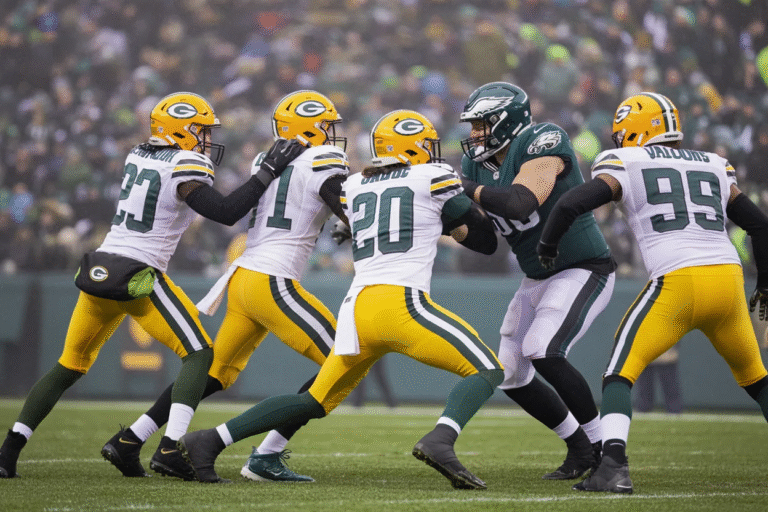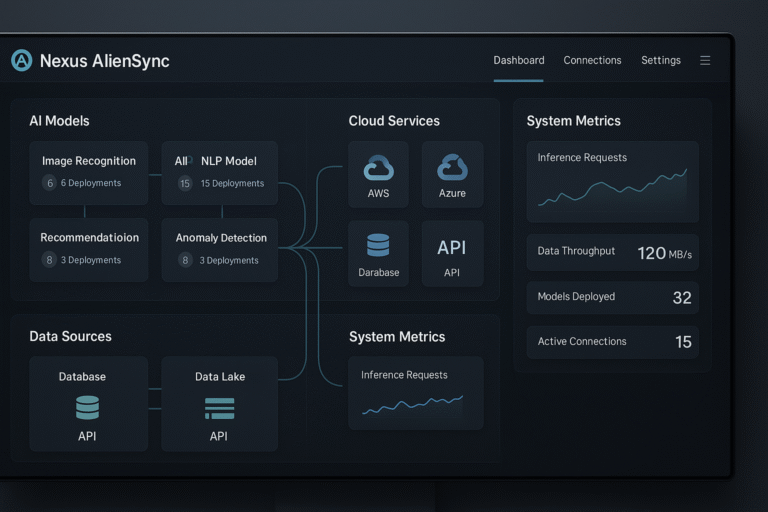
Introduction
When people search for Dallas Mavericks vs Memphis Grizzlies match player stats, they are not just looking for numbers on a screen. They want to understand what really happened on the court.
They want to know who controlled the tempo, which star carried their team, which role player quietly changed the game, and how those stats shape future clashes between these two Western Conference teams.
A box score can tell you who scored 25 or who grabbed 12 rebounds, but it cannot explain why those moments mattered or how they fit into a larger pattern.
This matchup has become a reliable test of identity for both teams. Dallas leans on shot creation, spacing, and offensive rhythm, while Memphis builds around energy, pace, and aggressive two-way play.
Whenever they face each other, the numbers reveal more than highlight reels do. They show how lineups work under pressure, which defensive schemes succeed or collapse, and how small details like second-chance points, turnovers, and shot selection quietly decide the outcome.
This article walks through those layers in a clear, simple way so that fans, analysts, fantasy managers, and content creators can all read the same stats and see a deeper story.
Match Overview: How the Game Tilted
In a recent meeting between the Dallas Mavericks and the Memphis Grizzlies, the tone of the game was set early. Memphis came out with sharper energy, faster decision-making, and better execution on both ends. Dallas found itself reacting instead of dictating, and that shift showed up immediately in the numbers.
Memphis pushed the ball, attacked closeouts, and forced Dallas into uncomfortable rotations, while Dallas struggled to turn individual scoring into consistent, winning possessions.
The scoreline reflected more than just shooting luck. Memphis built and protected leads through balanced contributions rather than relying on a single explosion.
Dallas had stretches where the offense looked strong, but those moments rarely aligned with solid defensive stops. When you read the Dallas Mavericks vs Memphis Grizzlies match player stats for this kind of game, the pattern is clear: one team played a complete game; the other played in fragments.
Grizzlies Key Player Stats: Balanced Pressure and Smart Production
Memphis’ success in this matchup usually begins at the point of attack and spreads outward. The primary ball-handler applies constant pressure on the rim, collapsing the defense and opening passing lanes.
That aggressive drive-and-kick style often leads to double-digit assists and quality shots for teammates. When the lead guard combines efficient scoring with playmaking, the entire Mavericks defense is dragged into difficult decisions.
Wing scorers and stretch bigs add another layer. A versatile forward knocking down threes, attacking closeouts, and crashing the glass turns Memphis’ offense from predictable to dynamic.
A skilled big who can protect the paint, contest shots, and still step out to space the floor forces Dallas’ bigs into uncomfortable matchups. The box score will usually show several Memphis players in double figures, a healthy number of assists, and strong rebounding numbers on both ends.
Those numbers are not random. They tell you that:
- Memphis is generating good shots instead of settling.
- Multiple players are involved, which makes it harder for Dallas to load up on one star.
- Hustle stats like offensive rebounds, deflections, and second-chance points are matching the eye test: more energy, more pressure, more impact.
For fantasy and analysis, this means Memphis players who combine usage, efficiency, and defensive activity in this matchup carry real value, not just one-night spikes.
Mavericks Key Player Stats: Talent vs Impact
Dallas often has recognizable names in the box score, and on paper, some of the lines can look solid. A guard or wing leading the team with a strong scoring night, a forward contributing with threes and drives, another piece adding double-digit points off the bench; it can appear balanced.
But Dallas Mavericks vs Memphis Grizzlies match player stats become truly meaningful when you compare them with context: game flow, defensive effort, and impact on runs.
In games where Dallas falls behind early, you might see decent individual scoring that comes while chasing the game. High points with a negative plus-minus, or solid shooting numbers without defensive stops, indicate production that does not fully translate into control. If the Mavericks allow straight-line drives, late rotations, and uncontested threes, no single 18–20 point performance can fix that.
Important patterns to watch:
- Are Dallas’ main scorers also creating for others, or are they isolated?
- Do their defensive stats (steals, contests, charges, deflections) support the idea of engaged two-way play?
- Is the bench providing efficient support, or just volume shots in desperation minutes?
When the numbers suggest that offense is happening in pockets but defense is breaking down consistently, it explains why seemingly “good” stats still end up in a loss against a locked-in Memphis side.
Team Stats That Decide Mavericks vs Grizzlies Games
Beyond individual lines, team-level stats in this matchup are where the real truth sits. A serious breakdown of Dallas Mavericks vs Memphis Grizzlies match player stats should always scan a few core areas:
Shooting Efficiency
Which team gets better shot quality? Memphis often thrives when they attack the rim and generate threes off drive-and-kick actions.
Dallas is at its best when its creators get downhill, bend the defense, and find open shooters instead of settling for tough contested jumpers. Field goal percentage, three-point percentage, and free-throw attempts together tell you who dictated shot selection.
Turnovers and Ball Security
If Memphis forces Dallas into live-ball turnovers, those instantly become transition points and momentum swings. On the other side, when Dallas plays clean, they can slow the game, get into their sets, and protect their stars from rush decisions.
Turnovers per game, steals, and points off turnovers are must-read columns.
Rebounding and Second-Chance Points
Extra possessions decide tight stretches. A team that dominates the defensive glass closes the door on runs. A team that grabs offensive boards punishes soft box-outs and late rotations. When Memphis wins the rebounding battle in this matchup, it usually reinforces their energy advantage.
Bench Impact
The box score rows for bench players often explain hidden turning points. Productive bench minutes for Memphis can stretch a small lead into a secure one. If Dallas’ second unit goes cold or bleeds points on defense, starters return under pressure.
Look for bench plus-minus, efficiency, and whether reserve guards and wings maintain spacing and intensity.
Reading Trends Across Multiple Matchups
Looking at just one game is helpful, but the real value of Dallas Mavericks vs Memphis Grizzlies match player stats appears when you compare several meetings.
Some patterns to track over time:
- Certain guards may consistently exploit mismatches in Dallas’ backcourt defense.
- Some wings or bigs might routinely score above their average against a particular coverage or rotation.
- One team might repeatedly win points in the paint, fast-break points, or second-chance points, hinting at a systemic edge in aggression or physicality.
When the same players keep showing up in strong lines and the same weaknesses repeat on the other side, you have a predictive edge. That kind of understanding helps fans sound informed, helps fantasy players make better choices, and helps creators publish breakdowns that feel expert, not generic.
How Different Audiences Can Use These Stats
The beauty of a well-read box score is that it serves different readers differently, without changing the facts.
A dedicated fan can use these stats to understand why their team struggled or succeeded instead of just blaming one missed shot.
A fantasy player can target high-usage, efficient performers who historically thrive in this matchup. Someone looking at predictions can use assist ratios, rebounding, and defensive numbers to judge whether a result was sustainable or fluky.
Key practical uses include:
- Spotting players whose production is backed by role and system, not just one hot night.
- Identifying whether a blowout or comeback was driven by shooting variance or structural advantages.
- Tracking if coaching adjustments actually show up in reduced turnovers, better defensive metrics, or smarter shot profiles in the next meeting.
The more you connect what you see on the court with what you see in the stats, the more valuable this matchup becomes as a learning model.
Conclusion
In the end, Dallas Mavericks vs Memphis Grizzlies match player stats are not just about who scored the most. They capture effort, identity, and habits. They show how Memphis can win through balance, pace, and collective responsibility, and how Dallas can shine through individual talent yet still struggle when defensive focus and support systems are not aligned.
They highlight how rebounding, turnovers, and efficient creation either support the stars or quietly undercut them.
For anyone who truly wants to understand this matchup, the right way to read the numbers is to treat them as a story. Each point, rebound, assist, steal, or foul is a sentence in that story.
When those sentences connect, you see why a team pulled away, why another team chased from behind, and what might happen next time they meet. If you have been following these games closely, you already know the emotions; now the stats give those emotions structure.
What’s your experience with Dallas Mavericks vs Memphis Grizzlies match player stats? Share your take, the performances that stood out to you, or the patterns you’ve noticed, and keep the conversation going with your own angle on the numbers.
Stay in touch to get more updates & alerts on sosomodapks! Thank you






